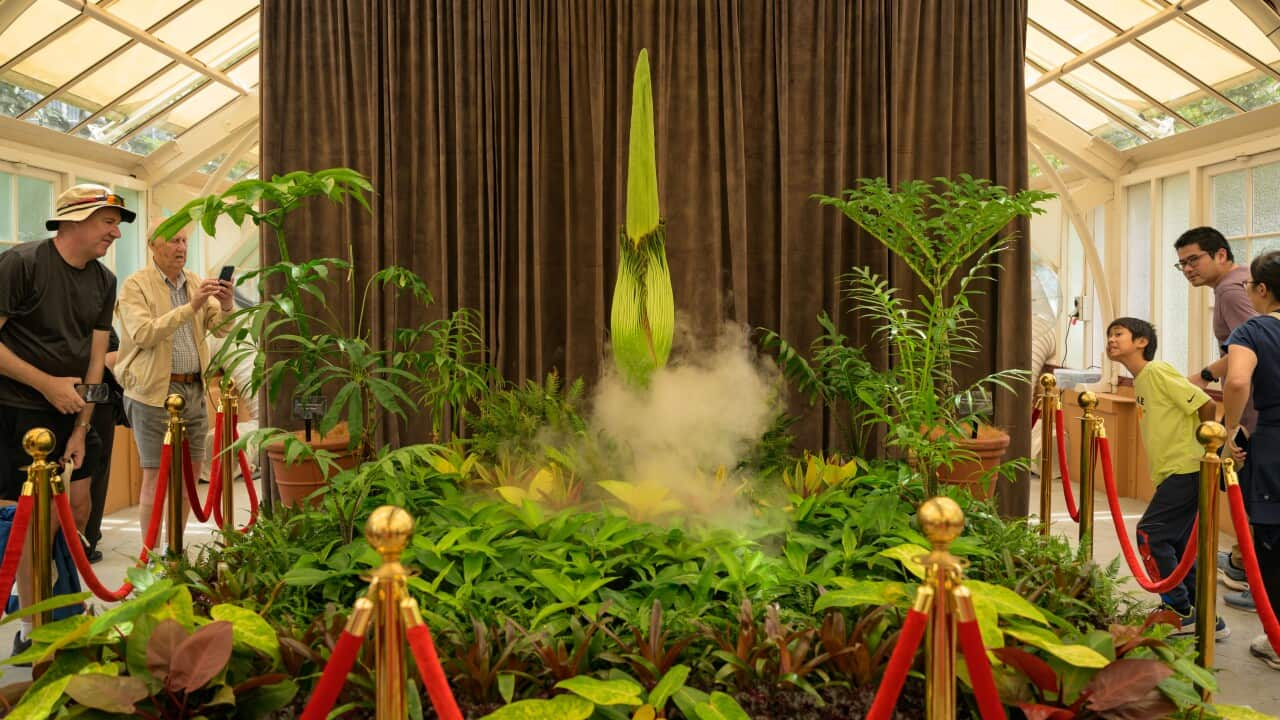A foul-smelling massive flower that has been nicknamed "Putricia" began its long-awaited bloom at Sydney's Royal Botanic Garden on Thursday.
Thousands of people around the world tuned in on an online live-stream to witness the event, which marked the plant's first unfurling in 15 years.
The rare titan arum — which is a type of carrion flower — has the world's largest and stinkiest flower spike and blooms for only 24 hours, during which it omits an odour that's been compared to wet socks or rotting cat food.
Over the past week, more than 5000 people have lined up to see Putricia while more than 500,000 have tuned in to the live-stream.
Botanists from the gardens have occasionally popped into the stream to measure the height and temperature of the flower, which is 1.63m high and 27C as of Thursday afternoon.
Many online viewers calling themselves "Putricia stans" have been tuning in from near and far.
The reason the plant omits such a foul stench, scientists have explained, is to attract pollinators like beetles and flies, which mistake the odour for that of a rotting animal and lay their eggs in it.
The flower — which internet fans have described as "an unproblematic queen" also has its own Spotify playlist, which includes tracks such as Seal's Kiss from a Rose, as well as a Facebook fan page.
Putricia was expected to reach peak stink on Thursday afternoon and remain open for several days.
"I would sacrifice my family for Putricia," one viewer who was watching the unfurling online said.
"This is the slowest burlesque ever," remarked another.
Both Melbourne and Geelong Botanic Gardens had corpse flower blooms last year as growers worldwide work to prevent the plant from extinction.
— Additional reporting by the Australian Associated Press.










